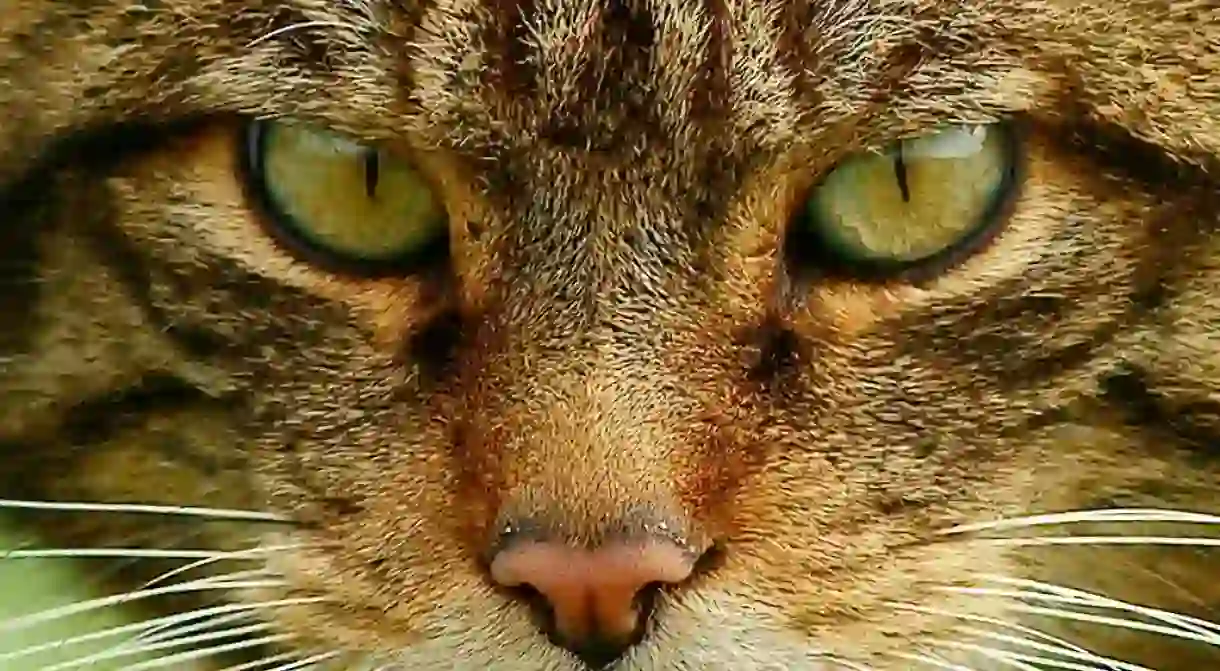The Largest Wildcat Ever Has Just Been Sighted in a Scottish Forest

As talk of the ‘beast from the east’ simmers down, it appears there’s a new animal on the prowl. And it’s in Scotland. Deemed one of the world’s largest wildcats ever documented, the ‘Clashindarroch Beast’ was spotted roaming a forest in Aberdeenshire.
This beauty, coming in at approximately four feet (1.2 metres) from tail to nose, was captured on camera thanks to the conservation efforts of Wildcat Haven, a fieldwork project dedicated to protecting Scottish wildcats in the wild.

Extraordinary sightings like this are orchestrated using remote live traps filled with food and scent bait. Sensitive to movement, the concealed camera snaps a shot the second anything crosses its path.
Wildcat Haven fieldworker Kev Bell told the BBC: ‘I’ve been fortunate enough to get footage of quite a few of these ghost cats; there’s about 10 to 15 of them here in Clashindarroch.’ The footage disproves various notions that there are no purebred Scottish wildcats left in the wild. Kev went on to say, ‘I couldn’t believe my eyes when I first saw this cat, he is enormous, a magnificent animal.’

An entirely separate species from domestic cats and up to twice the weight, these super predators display distinct features such as extremely thick fur marked with unbroken black and brown stripes and a thick banded tail painted with perfect dark rings.

As a unique island population of the European wildcat, it’s believed that the Scottish wildcat arrived in the UK some 12,000 years ago when Britain was connected to Europe by the land bridge known as Doggerland. Although driven to extirpation by human hunters and trappers throughout Wales, England and even southern Scotland, these resilient and highly elusive creatures still roam parts of the Highlands.

Being the most endangered mammals in Britain, the population is worryingly limited in numbers, with experts struggling to pinpoint an exact total. Some fear there may be as few as 35 pure wildcats left. Once more, these Highland tigers are terrified of humans.
Aside from deforestation, hybridisation (interspecies breeding) is the biggest threat towards genetically pure wildcats as both wildcats and domestic cats can mate with each other. In a desperate bid to save the breed, Wildcat Haven fieldworkers implement a sophisticated capture, neuter and release protocol for feral cats and low-grade hybrids around the Highlands.

Wildcat Haven fieldworker Steve Sleigh told the BBC: ‘These cats are a vital part of Scotland’s wild nature and ecology, and they must be protected wherever they live; they are one of the rarest animals in the world.’
Along with other Scottish wildcat populations in the likes of Lochaber and Caithness, the Clashindarroch Beast will be observed from afar and remain the laird of Scotland’s Clashindarroch high forest. Long may he reign!
https://www.youtube.com/watch?v=pSg_JpXk9jo













